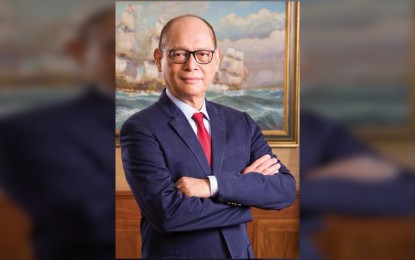[7.15] PH는 경제 회복에 대한 위험과 도전에 대비합니다.
컨텐츠 정보
- 20,095 조회
본문
마닐라 – 필리핀은 경제 회복을 위협하는 위험과 도전에 대처할 준비가 충분히 되어 있다고 벤자민 디오크노 재무장관이 말했습니다.
"우리는 인플레이션 압력과 그것이 경제에 미치는 연쇄적인 영향을 억제하면서 성장 모멘텀을 유지할 필요성의 균형을 효과적으로 맞추기 위한 포괄적인 개입을 가지고 있습니다."라고 금요일에 열린 제3차 G20 재무장관 및 중앙은행 총재 회의의 동료 지도자들 앞에서 디옥노가 말했습니다.
G20 또는 G20은 국제 금융 안정, 기후변화 완화, 지속 가능한 개발을 포함한 세계 경제 문제를 해결하기 위해 일하는 정부 간 포럼입니다.
이 나라는 19개국과 유럽연합으로 구성되어 있으며, 유럽 연합은 세계 인구의 약 60%, 세계 국내총생산(GDP)의 80%, 국제 무역의 75~80%를 차지하고 있습니다.
필리핀은 G20에 속해 있지 않지만 인도네시아 정부의 초청을 받아 G20 의장국이자 총재입니다.
세계 경제 세션은 세계 보건, 국제 금융 아키텍처, 금융 부문 문제, 지속 가능한 금융, 인프라 및 국제 조세를 포함한 다양한 주제를 다루는 일련의 토론 중 첫 번째였습니다.
금융 안정에 대한 위험과 증가하는 인플레이션 압력에 대해 제기된 문제들에 대해, 디오크노는 식량 공급과 가격을 안정시키기 위해 농업 생산량과 특정 상품의 수입을 증가시키려는 필리핀 정부의 노력을 언급했습니다.
그는 연료 가격 상승이 대중교통 부문에 미치는 영향을 완화하기 위해 목표 보조금을 배정했다고 말했습니다.
그는 필리핀 중앙은행(BSP)이 인플레이션 상승을 막기 위해 필요한 통화정책 조치를 취하는데 결정적이었다고 말했습니다.
"이러한 정책 수단들과 중기 재정 프레임워크가 손에 잡히면, 우리는 계속되는 충격으로 인한 고통이 짧고 우리의 회복은 견고하게 유지될 것이라고 확신합니다"라고 디오크노는 말했습니다.
정부의 중기 재정 프레임워크는 적자를 줄이고, 재정 지속 가능성을 촉진하며, 강력한 경제 성장을 가능하게 하는 것을 목표로 합니다.
여기에는 페르디난드 마르코스 주니어가 첫 국정연설(SONA)을 통해 국민에게 상세히 제시할 사회경제적 발전을 위한 단기·중기 전략계획이 담겨 있습니다.
국가의 밝은 경제 전망을 보여주기 위해, 디옥노는 회의에서 필리핀이 올해와 2023년에 아세안+3 지역에서 가장 높은 성장률을 기록할 것으로 예상된다고 말했습니다.
ASEAN+3 거시경제연구실(AMRO)은 7월 아세안+3 지역경제전망(AREO) 보고서의 분기별 업데이트를 토대로 필리핀의 2022년 경제성장 전망을 국내총생산(GDP)의 6.5%에서 6.9%로 상향 조정했습니다.
2023년 AMRO는 필리핀의 성장률 전망치를 6.5%로 유지했습니다.
"안심하세요, 필리핀은 지속 가능한 세계 경제 회복을 확보하기 위해 출구 전략과 적절한 재정 및 통화 도구를 이행하는 G20 국가들의 지속적인 노력을 지원하기 위해 모든 것을 기여할 것입니다."라고 디오크노가 말했습니다.
This is the Original Article
MANILA – The Philippines is fully prepared to address risks and challenges that threaten its economic recovery, Finance Secretary Benjamin Diokno said.
“We have a comprehensive set of interventions to effectively balance the need to sustain growth momentum while containing inflationary pressures and their cascading effects on the economy,” Diokno said before fellow leaders at the Global Economy session of the hybrid 3rd G20 Finance Ministers and Central Bank Governors Meeting on Friday.
The G20 or Group of Twenty is an intergovernmental forum that works to address global economic issues, including international financial stability, climate change mitigation, and sustainable development.
It is composed of 19 countries plus the European Union, which, together, comprises the world's largest economies, accounting for about 60 percent of the world’s population, 80 percent of global gross domestic product (GDP), and 75 percent to 80 percent of international trade.
The Philippines is not part of the G20 but was invited to participate as a guest nation by the government of Indonesia, the current chair and president of the group.
The Global Economy session was the first in a series of discussions covering various topics, including, global health, international financial architecture, financial sector issues, sustainable finance, infrastructure, and international taxation.
Responding to issues raised on risks to financial stability and rising inflationary pressures, Diokno cited the Philippine government's effort to increase agricultural output and importation of certain commodities to stabilize the supply and prices of food.
He said targeted subsidies have been allocated to cushion the impact of rising fuel prices on the public transport sector.
The Bangko Sentral ng Pilipinas (BSP), he said, has been decisive in undertaking the necessary monetary policy actions to arrest the rise of inflation.
“With these policy instruments and a Medium-Term Fiscal Framework in hand, we are confident that the pains brought by ongoing shocks will be short and our recovery will remain robust,” Diokno said.
The government's Medium-Term Fiscal Framework (MTFF) is aimed at reducing the deficit, promoting fiscal sustainability, and enabling robust economic growth.
It contains near-term and medium-term strategic plans for socioeconomic development, which will be presented in detail to the public by President Ferdinand Marcos Jr. in his first State-of-the-Nation Address (SONA).
To demonstrate the country’s bright economic prospects, Diokno said during the meeting that the Philippines is projected to post the highest growth rate in the Asean+3 region this year and in 2023.
The ASEAN+3 Macroeconomic Research Office (AMRO) revised upwards its 2022 economic growth projection for the Philippines from 6.5 percent to 6.9 percent of its GDP, based on the July quarterly update of the ASEAN+3 Regional Economic Outlook (AREO) Report.
For 2023, the AMRO kept its growth forecast for the Philippines at 6.5 percent.
“Rest assured, the Philippines will contribute all it can to support the ongoing efforts of the G20 countries in implementing exit strategies and appropriate fiscal and monetary tools to secure a sustainable global economic recovery,” Diokno said. (PR)
관련자료
-
이전
-
다음


